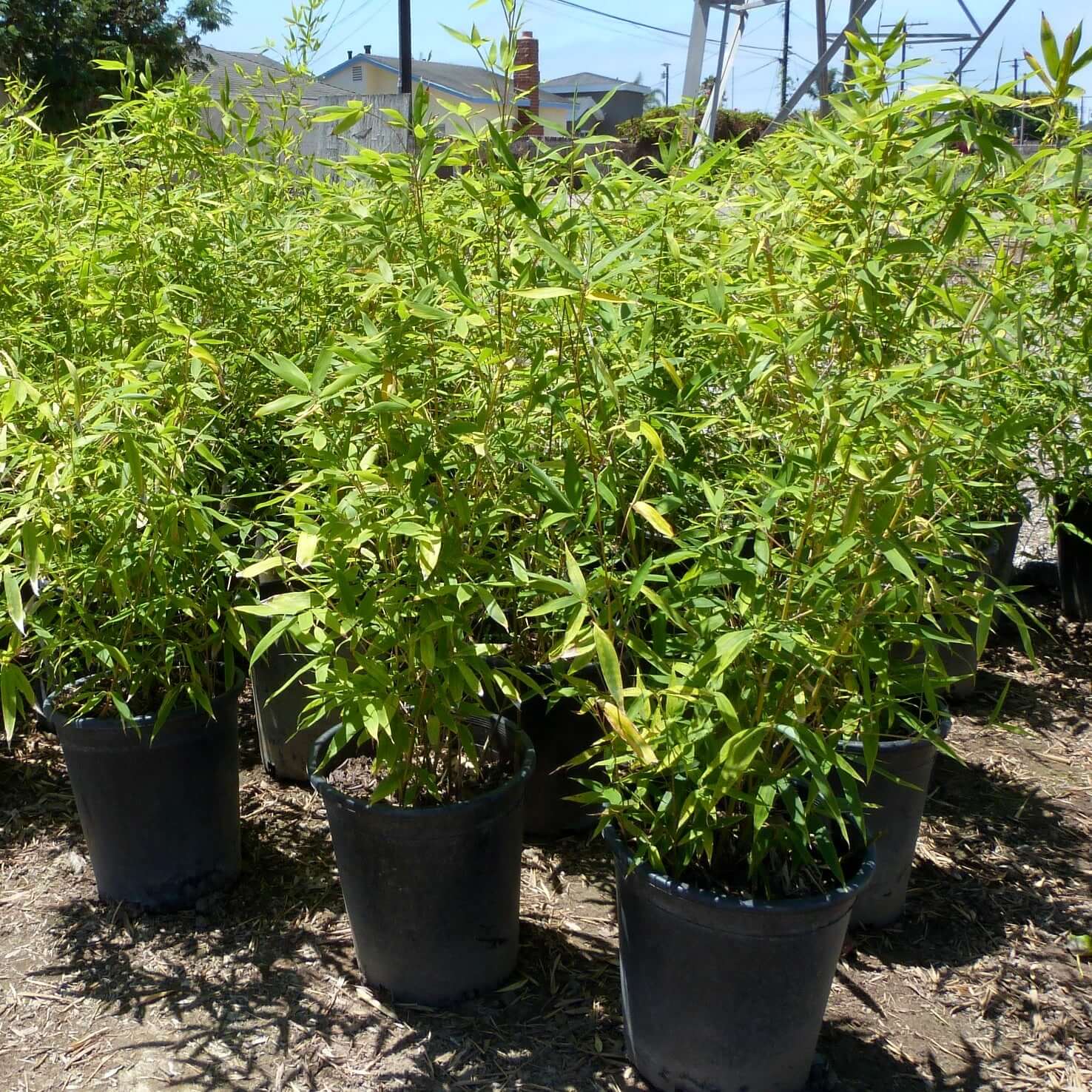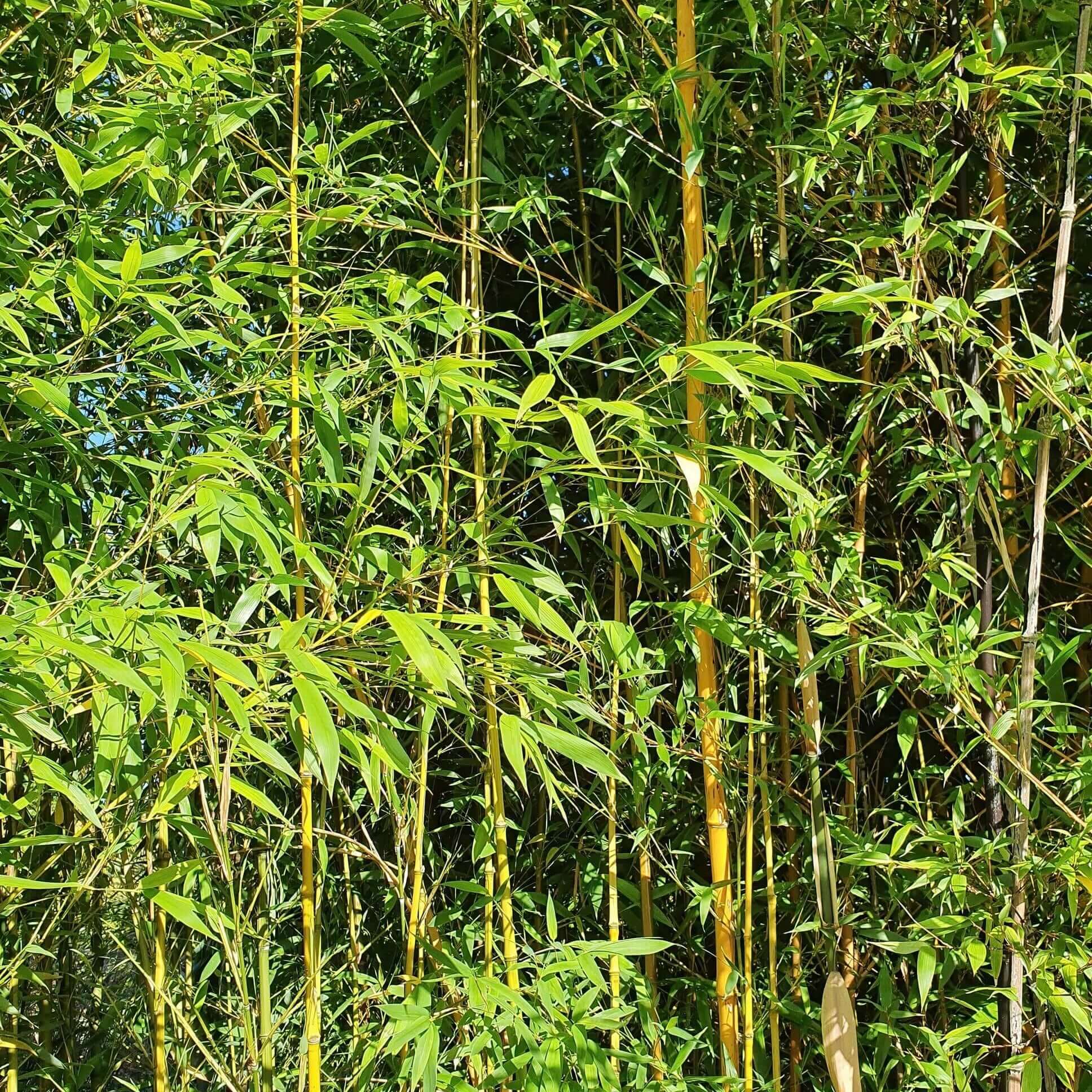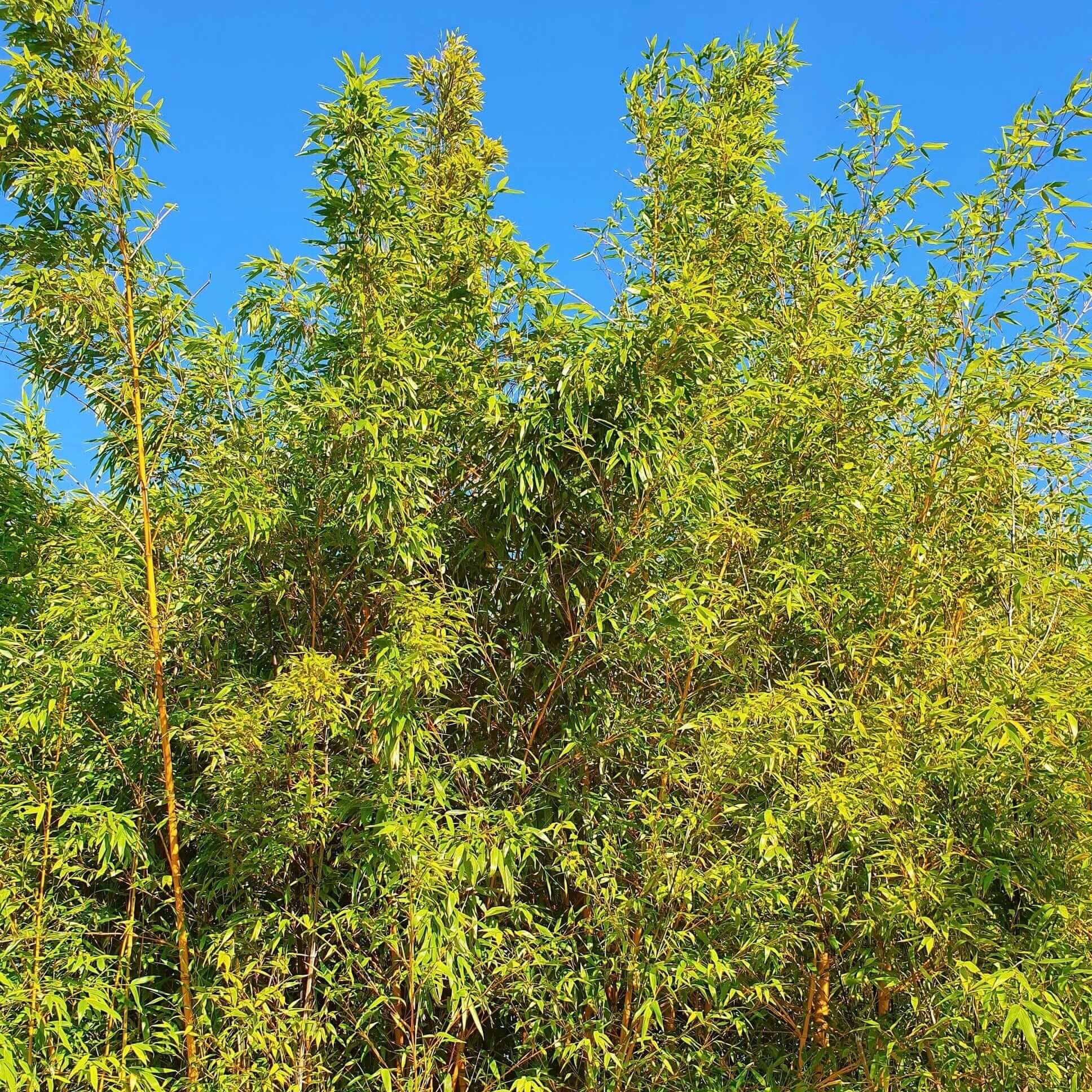
Golden Bamboo
Phyllostachys aurea
Delivery
24-hour money-back guarantee
Free delivery on orders over $349
Big Project? Call 888-444-1126 for bulk rates!
Phyllostachys aurea is a tall, vigorously spreading bamboo with small green leaves on stiff, erect, yellow-green, polished stems that grow 3.5 inches or smaller in diameter. Golden Bamboo, also known as Fish-Pole Bamboo, makes a beautiful, elegant screen or hedge. Best to contain roots due to the running nature of this bamboo.
How big does Golden Bamboo grow?
What kind of light and soil does it prefer?
How fast does it grow?
Does it need pruning or special care?
15-30 ft.
Spreading
Moderate
Perfect Your Landscape With Expert Help
Customize your yard with confidence. Schedule your free consultation today and bring your outdoor space to life!


